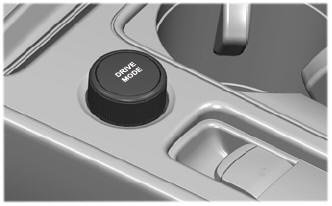Lincoln Corsair: Exhaust System - 2.0L EcoBoost (177kW/240PS) – MI4 / Diagnosis and Testing - Exhaust System
Global Customer Symptom Code (GCSC) Chart
Diagnostics in this manual assume a certain skill level and knowledge of Ford-specific diagnostic practices.
REFER to: Diagnostic Methods (100-00 General Information, Description and Operation).
| Symptom | Action |
|---|---|
| Fit/Finish/Body > Paint/Finish > Exhaust > Corrosion/Rust | GO to Pinpoint Test C |
| Start/Run/Move > Noise > Exhaust > Always | GO to Pinpoint Test D |
| Driving Performance > Lack/Loss of Power > Acceleration > Always | GO to Pinpoint Test A |
| Safe & Secure > Smoke/Odor > Exhaust > Hot | GO to Pinpoint Test B |
Symptom Chart(s)
Symptom Chart - Exhaust System
NOTE: Aftertreatment components consist of some or all of the following components: Catalytic Converters, Gasoline Particulate Filters, Diesel Particulate Filters, Selective Catalytic Reduction Catalysts, Exhaust Gas Heat Exchanger.
Diagnostics in this manual assume a certain skill level and knowledge of Ford-specific diagnostic practices.
REFER to: Diagnostic Methods (100-00 General Information, Description and Operation).
Symptom Chart
| Condition | Actions |
|---|---|
| Lack of power - vehicle performance complaint | GO to Pinpoint Test A |
| Odour from vehicle - possible sign of smoke | GO to Pinpoint Test B |
| Surface rust or degradation of surface treatment | GO to Pinpoint Test C |
| Noise such as buzzing, drumming, thumping, ringing or hissing coming from exhaust system | GO to Pinpoint Test D |
Pinpoint Tests
 PINPOINT TEST A: LACK OF POWER
PINPOINT TEST A: LACK OF POWER|
NOTE: Aftertreatment components consist of some or all of the following: Catalytic Converters, Gasoline Particulate Filters, Diesel Particulate Filters, Selective Catalytic Reduction Catalysts. Normal Operation and Fault Conditions
REFER to: Exhaust System - System Operation and Component Description
(309-00A Exhaust System - 2.0L EcoBoost (177kW/240PS) – MI4, Description
and Operation). Possible Sources
Visual Inspection and Pre-checks
|
||||
| A1 CHECK THE EXHAUST SYSTEM FOR SIGNS OF DAMAGE | ||||
Is damage to the aftertreatment components and associated sensors found?
|
||||
| A2 CHECK THE EXHAUST SYSTEM FOR OBSTRUCTIONS OR RESTRICTED FLOW | ||||
Is any flow restricting damage to the exhaust components seen?
|
 PINPOINT TEST B: ODOUR FROM VEHICLE
PINPOINT TEST B: ODOUR FROM VEHICLE|
NOTE: Aftertreatment components consist of some or all of the following: Catalytic Converters, Gasoline Particulate Filters, Diesel Particulate Filters, Selective Catalytic Reduction Catalysts. Normal Operation and Fault Conditions
REFER to: Exhaust System - System Operation and Component Description
(309-00A Exhaust System - 2.0L EcoBoost (177kW/240PS) – MI4, Description
and Operation). Possible Sources
Visual Inspection and Pre-checks
|
||||
| B1 CHECK FOR DAMAGED AFTERTREATMENT COMPONENTS ASSOCIATED SENSORS | ||||
Have the aftertreatment components or associated electronic sensors incurred damage?
|
||||
| B2 CHECK FOR INCORRECT FUEL OR FUEL WITH A HIGH SULFUR CONTENT | ||||
Does the fuel tank contain incorrect fuel or fuel high in sulfur content?
|
||||
| B3 CHECK FOR CORRECT PCM (POWERTRAIN CONTROL MODULE) OPERATION | ||||
Are the powertrain controls operating correctly?
|
 PINPOINT TEST C: SURFACE RUST OR DEGRADATION OF SURFACE TREATMENT
PINPOINT TEST C: SURFACE RUST OR DEGRADATION OF SURFACE TREATMENT|
NOTE: Surface rust is a characteristic of materials used on exhaust systems. Exposure to heat or road salt may result in surface rust. Normal Operation and Fault Conditions
REFER to: Exhaust System - System Operation and Component Description
(309-00A Exhaust System - 2.0L EcoBoost (177kW/240PS) – MI4, Description
and Operation). Possible Sources
Visual Inspection and Pre-checks
|
||||
| C1 CHECK THE EXHAUST SYSTEM FOR PERFORATIONS, RUST OR DAMAGE | ||||
Are perforations, rust or damage present?
|
||||
| C2 CHECK FOR CORRECT PCM (POWERTRAIN CONTROL MODULE) OPERATION | ||||
Are the powertrain controls operating correctly?
|
 PINPOINT TEST D: NOISE FROM EXHAUST SYSTEM
PINPOINT TEST D: NOISE FROM EXHAUST SYSTEM|
NOTE: Aftertreatment components consist of some or all of the following: Catalytic Converters, Gasoline Particulate Filters, Diesel Particulate Filters, Selective Catalytic Reduction Catalysts. Normal Operation and Fault Conditions
REFER to: Exhaust System - System Operation and Component Description
(309-00A Exhaust System - 2.0L EcoBoost (177kW/240PS) – MI4, Description
and Operation). Possible Sources
Visual Inspection and Pre-checks
|
||||
| D1 CHECK THE EXHAUST SYSTEM FASTENERS | ||||
Was exhaust noise still present after confirming all exhaust system fasteners are tightened to specification?
|
||||
| D2 INSPECT THE EXHAUST ISOLATORS AND HANGER BRACKETS | ||||
Were exhaust system isolators and hanger brackets found to be in correct alginment and in good condition?
|
||||
| D3 CHECK FOR MISSING OR DAMAGED EXHAUST HEAT SHIELDS | ||||
Were the exhaust heat shields found to be present and in correct alignment?
|
||||
| D4 CHECK THE EXHAUST SYSTEM FOR ALIGNMENT | ||||
Was the exhaust noise seen to originate from contact between the exhaust system and the surrounding components/vehicle body?
|
||||
| D5 CHECK THE EXHAUST SYSTEM FOR INTERNAL DAMAGE | ||||
Was noise such as rattling, clanging or twanging heard within the exhaust components?
|
||||
| D6 CHECK THE EXHAUST SYSTEM FOR LEAKS | ||||
Were leaks found?
|
||||
| D7 CHECK FOR COOL DOWN PINGING | ||||
Was the exhaust complaint found to be cool down pinging?
|
 Diagnosis and Testing - Catalyst System
Diagnosis and Testing - Catalyst System
Diagnostic Trouble Code (DTC) Chart
Diagnostics in this manual assume a certain skill level and knowledge of Ford-specific diagnostic practices. REFER to: Diagnostic Methods (100-00 General Information, Description and Operation)...
 Removal and Installation - Catalytic Converter
Removal and Installation - Catalytic Converter
Special Tool(s) /
General Equipment
Punch
Copper Hammer
Removal
NOTE:
If the catalytic converter is not being replaced, the HO2S
and the catalyst monitor sensor do not need to be removed from the
catalytic converter...
Other information:
Lincoln Corsair 2020-2025 Service Manual: Removal and Installation - Rear Door Glass Top Run
Removal NOTE: LH (left-hand) side shown, RH (right-hand) side similar. NOTE: Removal steps in this procedure may contain installation details. Remove the rear door window glass. Refer to: Rear Door Window Glass (501-11 Glass, Frames and Mechanisms, Removal and Installation)...
Lincoln Corsair 2020-2025 Service Manual: Removal and Installation - Spark Plugs
Removal NOTE: Removal steps in this procedure may contain installation details. Remove the ignition coil-on-plugs. Refer to: Ignition Coil-On-Plug (303-07A Engine Ignition - 2.0L EcoBoost (177kW/240PS) – MI4/2.0L EcoBoost (184kW/250PS) – MI4, Removal and Installation)...
Categories
- Manuals Home
- 1st Generation Lincoln Corsair Owners Manual
- 1st Generation Lincoln Corsair Service Manual
- Opening and Closing the Hood
- Overhaul - Main Control Valve Body
- Warning Lamps and Indicators
- New on site
- Most important about car
Selecting a Drive Mode. DRIVE MODES
Selecting a Drive Mode
Note: Drive mode changes may not be available when the ignition is off.


 PINPOINT TEST A: LACK OF POWER
PINPOINT TEST A: LACK OF POWER